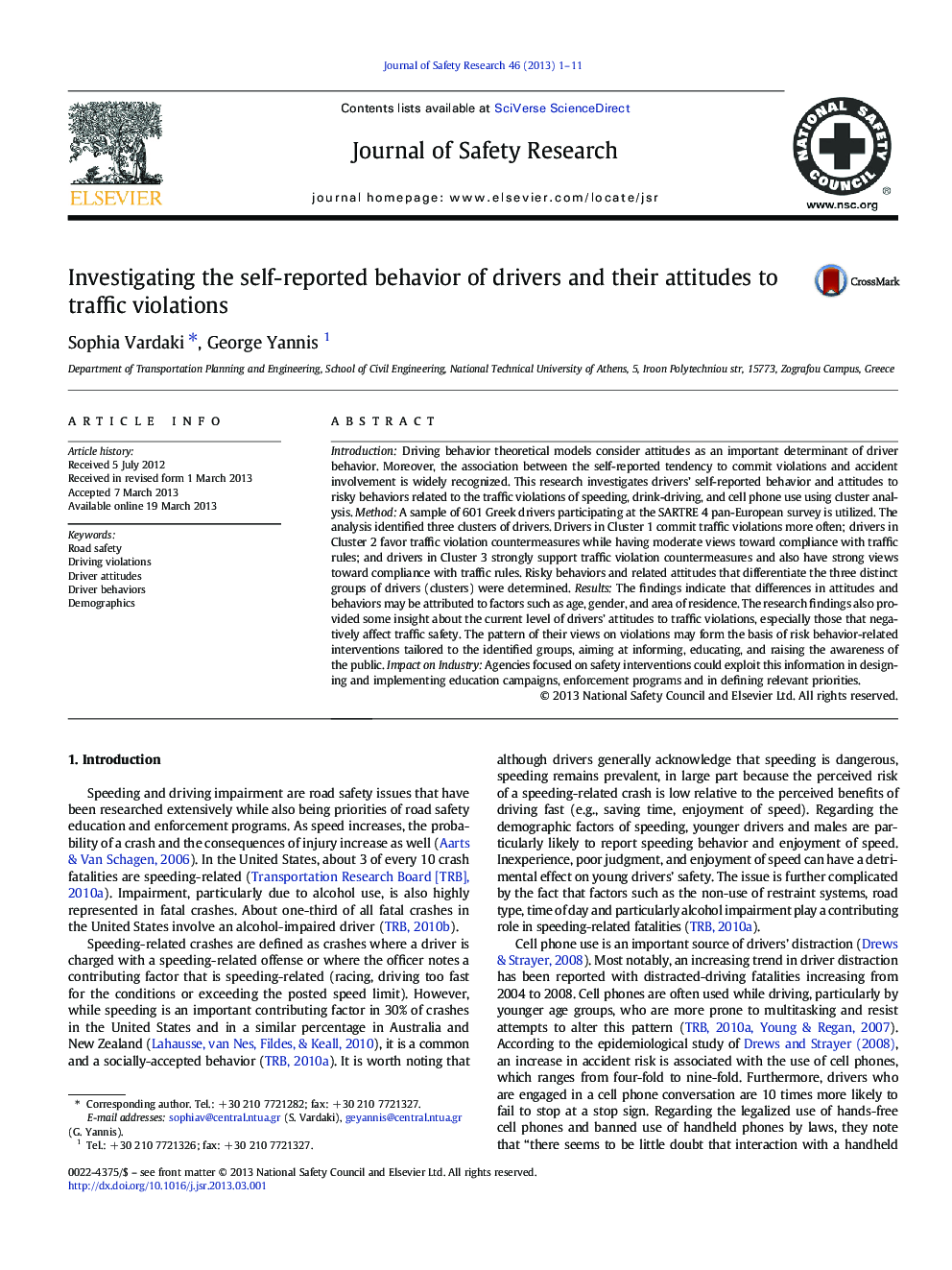| کد مقاله | کد نشریه | سال انتشار | مقاله انگلیسی | نسخه تمام متن |
|---|---|---|---|---|
| 587389 | 1453314 | 2013 | 11 صفحه PDF | دانلود رایگان |
• The present research investigated drivers’ self-reported behaviors and their attitudes to driving violations and perceived acceptance of violation countermeasures using a clustering procedure.
• The research identified risky behaviors and related attitudes that differentiate three distinct groups of drivers (clusters): drivers who commit traffic violations more often; those who favor traffic violation countermeasures while having moderate views toward compliance with traffic rules; and those drivers who strongly support traffic violation countermeasures and who also have strong views toward compliance with traffic rules.
• The research identified the demographic characteristics of age, gender, the area of residence and educational level of drivers in the clusters.
IntroductionDriving behavior theoretical models consider attitudes as an important determinant of driver behavior. Moreover, the association between the self-reported tendency to commit violations and accident involvement is widely recognized. This research investigates drivers’ self-reported behavior and attitudes to risky behaviors related to the traffic violations of speeding, drink-driving, and cell phone use using cluster analysis.MethodA sample of 601 Greek drivers participating at the SARTRE 4 pan-European survey is utilized. The analysis identified three clusters of drivers. Drivers in Cluster 1 commit traffic violations more often; drivers in Cluster 2 favor traffic violation countermeasures while having moderate views toward compliance with traffic rules; and drivers in Cluster 3 strongly support traffic violation countermeasures and also have strong views toward compliance with traffic rules. Risky behaviors and related attitudes that differentiate the three distinct groups of drivers (clusters) were determined.ResultsThe findings indicate that differences in attitudes and behaviors may be attributed to factors such as age, gender, and area of residence. The research findings also provided some insight about the current level of drivers’ attitudes to traffic violations, especially those that negatively affect traffic safety. The pattern of their views on violations may form the basis of risk behavior-related interventions tailored to the identified groups, aiming at informing, educating, and raising the awareness of the public.Impact on IndustryAgencies focused on safety interventions could exploit this information in designing and implementing education campaigns, enforcement programs and in defining relevant priorities.
Journal: Journal of Safety Research - Volume 46, September 2013, Pages 1–11
